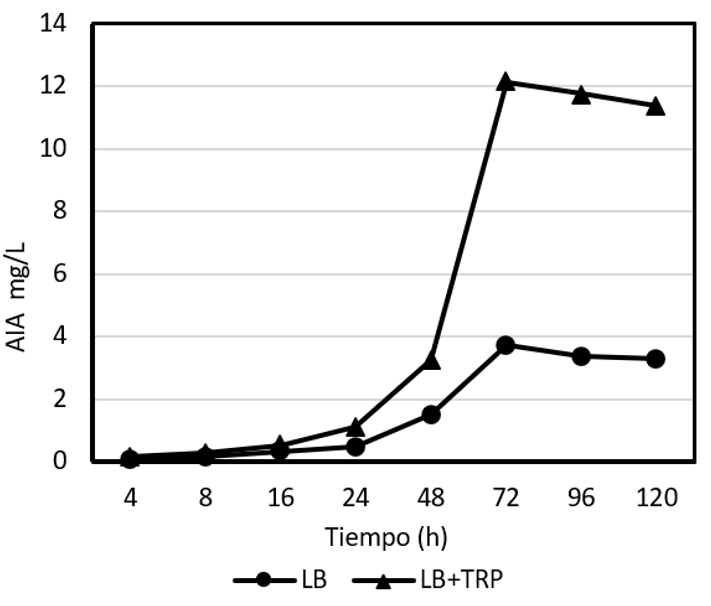Growth promotion in chard, carrot and radish plants by Pseudoxanthomonas indica named H32
Main Article Content
Abstract
One of the main problems in current agriculture is the reduction of chemical fertilizers by replacing them with biofertilizers composed of beneficial microorganisms for soils and plants. Therefore, the present work aims to evaluate the effect of Pseudoxanthomonas indica named H32, previously isolated from healthy tomato plants rhizosphere, on the growth, development and yield of chard, carrot and radish crops. To this end, its ability to produce indoleacetic acid (IAA) was determined. In addition, its property to solubilizing insoluble phosphate in Pikovskaya-agar medium. The seeds were inoculated by soaking in a H32 cells suspension with 105 UFC/mL in 0.1 % carboxymetyl cellulose solution, for 3 h. A similar procedure using only carboxymetyl cellulose solution was done for non-inoculated seeds. All Seeds were then sown in 1 x 10 m plots. H32 was inoculated around the root of the seedlings of inoculated seeds, seven days after germination. The results showed that plants from inoculated seeds had greater humid weight, greater height, and roots with greater length and weight than plants from non-inoculated seeds (P < 0.01). The inoculation of the seeds and soil with H32 increased the yield by 19 % for radish, 88.7 % and 68.5 % for chard and carrot, respectively. These results show that Pseudoxanthomonas indica H32 has potential for use as a growth promoter in the crops studied.
Article Details

This work is licensed under a Creative Commons Attribution-NonCommercial 4.0 International License.
Those authors who have publications with this journal accept the following terms of the License Attribution-NonCommercial 4.0 International (CC BY-NC 4.0):
You are free to:
- Share — copy and redistribute the material in any medium or format
- Adapt — remix, transform, and build upon the material
The licensor cannot revoke these freedoms as long as you follow the license terms.
Under the following terms:
- Attribution — You must give appropriate credit, provide a link to the license, and indicate if changes were made. You may do so in any reasonable manner, but not in any way that suggests the licensor endorses you or your use.
- NonCommercial — You may not use the material for commercial purposes.
- No additional restrictions — You may not apply legal terms or technological measures that legally restrict others from doing anything the license permits.
The journal is not responsible for the opinions and concepts expressed in the works, they are the sole responsibility of the authors. The Editor, with the assistance of the Editorial Committee, reserves the right to suggest or request advisable or necessary modifications. They are accepted to publish original scientific papers, research results of interest that have not been published or sent to another journal for the same purpose.
The mention of trademarks of equipment, instruments or specific materials is for identification purposes, and there is no promotional commitment in relation to them, neither by the authors nor by the publisher.
